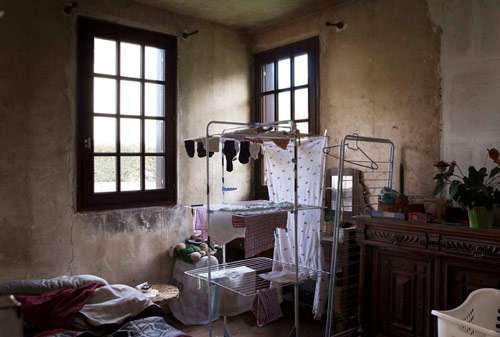Originally published in Euractiv 21st October 2020:
A wave of much-needed housing renovations could soon be sweeping through Europe, according to European Commission plans published last week. This Renovation Wave must ensure a quick and locally supported transition in order to support those who need it most, writes Martha Myers.
Martha Myers is an energy poverty campaigner for Friends of the Earth Europe and coordinator of the Right to Energy Coalition.
The much-anticipated ‘Renovation Wave’ strategy is recognition, finally, of the need to alleviate crippling levels of energy poverty and to cut energy consumption (and carbon) in Europe’s wasteful buildings. But much more will have to be done if those who need a renovation wave most of all – Europe’s energy poor – are to feel the benefit.
One in four Europeans are unable to adequately light, heat or cool their homes – contributing to the deaths of 100,000 people each year. Critical levels of energy poverty are expected to soar this winter due to COVID-19.
So the strategy comes at a pivotal time. This, together with new guidelines on energy poverty for member states, shows the European Commission is taking the challenges of energy poverty and inclusive green transition seriously.
Nevertheless, member states lag considerably on the issue, according to a Commission assessment. So how do the Commission’s strong words and good intentions stack up when compared to the scale of the challenge?
Hitting the right headlines
The framing of the Commission’s renovation strategy cannot be faulted. Energy poverty was identified as one of the three top priorities, and housing renovation the key solution to tackle it.
Importantly, the strategy sets alleviating energy poverty within the context of the wider challenge of delivering affordable housing, including through social housing providers.
It also paid attention to the considerable benefits of efficient housing, including the potential to create over 160,000 green jobs across Europe.
The Commission’s Recommendation on Energy Poverty provided essential, if overdue, advice to member states on how to define and measure energy poverty, helping to track and tackle the crisis.
Packing less of a punch on prioritising poverty
However, while the Commission certainly paid full lip service, it failed to follow through with real action or ring-fenced funding for energy-poor households in practice.
How many of the 35 million renovations promised will be for energy-poor households? This was left unanswered.
Pioneering finance needed
The financing of the Wave equally lacks priority.
The Commission has provided a breakdown of elements of various EU and recovery funds that could be used to alleviate energy poverty. But it is up to national or local authorities to navigate this complex landscape.
With no ring-fenced mechanisms specifically to target energy poverty, member states are left to their own devices to prioritise funds for people who can least afford the costs of renovation.
Even EU funds earmarked for low-income or disadvantaged regions, like Just Transition, Modernisation, or cohesion funds, give little incentive to prioritise investment in renovation.
The necessary funding must come at the EU level, particularly so member states with the highest energy poverty are not left overstretched, choosing between public services and renovation. It is unfair to urge member states to adequately and quickly renovate vast numbers of energy-poor households with no support.
Without this assistance, we are likely to see bad or even dangerous retrofits taking place, such as the tragedy at Grenfell Tower in London. We will need clear and enforceable standards on retrofit quality at EU level to make sure energy-poor households are not put in this position.
It goes without saying that energy-poor households need significant financial support to renovate. But ring-fenced funding, guidelines and quality standards for low-income households are short on the ground in this strategy.
Falling short on speed
The energy poor are also on the frontline of the climate crisis, being the most vulnerable to volatile and extreme weather conditions. It is therefore essential to take quick and pioneering action to reduce Europe’s carbon emissions.
The ambition of the renovation wave, to double the current – low – rate of building renovations from 1% to 2% of buildings a year, is a step in the right direction.
But it will not be quick enough to move Europe rapidly towards zero carbon buildings for everyone in line with the Paris climate agreement.
We need to be renovating nearer to 70 million buildings by 2030, rather than the 35 million promised.
Legislation now needed
Perhaps the most promising proposal is to improve the efficiency of the most decrepit and energy-wasteful buildings, with a pledge to introduce minimum energy performance standards in legislation.
As low income and energy-poor people disproportionately live in the worst-performing buildings, a requirement to improve these homes could be a powerful, targeted, poverty alleviation tool – as several countries have already shown.
But minimum standards work effectively when sufficient and suitable finance and practical support is in place, well before the standard is enforced.
To avoid unintended social impacts, such as gentrification or ‘renovictions’, we need targeted funding, local support, and social impact guidelines monitored at the local level, as part of the revision of the buildings directive next year.
Proposed ‘One Stop Shops’ could help here to guide citizens during renovations; but they must be made inclusive and accessible, actively reaching out especially to vulnerable groups facing e.g. digital, health, disability or other challenges.
The Renovation Wave announcement is a case of the right direction, but the wrong speed. To truly be a wave, renovations must be faster and deeper; and better targeted to the households who need it most, but can least afford it.
Leaky roofs, unhealthy homes, and wasted energy can and must be a thing of the past. But from this tentative start, more ambition, further funding and European led-action to prioritise energy-poor households must follow.



